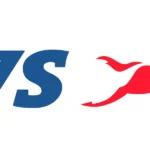Samsung removed S Pen support from the Galaxy Z Fold 7 to achieve a slimmer and lighter design. The decision reflects evolving user preferences and new design priorities.

Source Image: indiatoday
Galaxy Z Fold 7 Gets Slimmer, Drops S Pen Support
Samsung’s latest foldable, the Galaxy Z Fold 7, has made headlines for being the slimmest and lightest Fold ever—but it also comes with a trade-off. The device no longer supports the S Pen, a move that surprised many users, especially those who relied on the stylus for productivity and creative work.
The Design Trade-Off: Slimness Over Stylus
According to Samsung, the decision to drop S Pen support came down to re-engineering priorities. In order to make the Fold 7 just 8.9 mm thick when folded and 4.2 mm when unfolded, the internal digitizer layer—which enables stylus input—had to be removed.
This allowed Samsung to shave down the device’s weight and thickness significantly, offering a more pocket-friendly experience. The new titanium frame and slimmer hinge also contributed to this leaner profile.
Key Changes in the Fold 7
-
No S Pen support: Due to the absence of the digitizer layer
-
Thinner design: Folded thickness now 8.9 mm, unfolded 4.2 mm
-
Lighter build: Weighs just around 215 grams
-
Upgraded durability: Improved materials and fold mechanism
-
Larger display: Inner screen slightly expanded, with minimized bezels
Could the S Pen Return?
Samsung hasn’t ruled out the possibility of bringing back stylus support in future Fold models. The company is reportedly exploring new active stylus technology—similar to Apple’s system—where the pen itself carries electronic components instead of relying on a digitizer in the screen.
If successful, this could allow future foldables to offer stylus support without compromising on thickness or weight.
What It Means for Users
For productivity enthusiasts and digital artists, the removal of S Pen support may be disappointing. However, for users focused on portability, comfort, and cutting-edge design, the Fold 7 delivers a thinner, lighter, and more refined experience.
This move signals a clear shift in foldable priorities—one where form factor and everyday usability take precedence over niche features.














